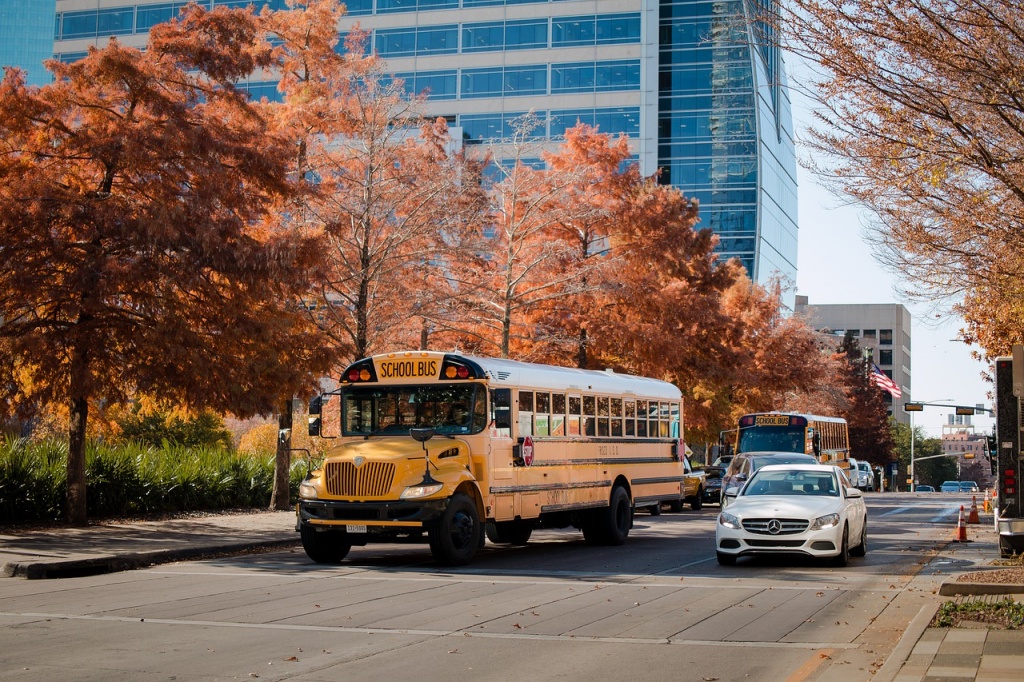
The slowness of summer is coming to an end and families are gearing up for school to begin. Things get a little crazy on the roads during the busy school year. It's never more important for drivers to slow down and pay attention than when kids are present, especially before and after school.
If you're dropping off
Schools often have specific drop-off procedures for the school year. Make sure you know them for the safety of all kids. More children are hit by cars near schools than at any other location, according to the National Safe Routes to School program. The following apply to all school zones:
- Don't double park. It blocks visibility for other children and vehicles.
- Don't load or unload children across the street from the school.
- Carpool to reduce the number of vehicles at the school.
Sharing the road with young pedestrians
According to research by the National Safety Council, most of the children who lose their lives in bus-related incidents are four to seven years old who are walking. They are hit by the bus, or by a motorist illegally passing a stopped bus. A few precautions go a long way toward keeping children safe:
- Don't block the crosswalk when stopped at a red light or waiting to make a turn, forcing pedestrians to go around you; this could put them in the path of moving traffic.
- In a school zone when flashers are blinking, stop and yield to pedestrians crossing the crosswalk or intersection.
- Always stop for a school patrol officer or crossing guard holding up a stop sign.
- Take extra care to look out for children in school zones, near playgrounds and parks, and in all residential areas.
- Don't honk or rev your engine to scare a pedestrian, even if you have the right of way.
- Never pass a vehicle stopped for pedestrians.
- Always use extreme caution to avoid striking pedestrians wherever they may be, no matter who has the right of way.
Sharing the road with school buses
If you're driving behind a bus, allow a greater following distance than if you were driving behind a car. This will give you more time to stop when necessary. It is illegal in all 50 states to pass a school bus that is stopped to load or unload children.
- Never pass a bus from behind, or from either direction if you're on an undivided road, if it is stopped to load or unload children.
- If a bus's yellow or red lights are flashing and the stop arm is extended, traffic must stop.
- The area 10 feet around a school bus is the most dangerous for children. Stop far enough back to allow them space to safely enter and exit the bus.
- Be alert. Children can be unpredictable and tend to ignore hazards and take risks.
Sharing the road with bicyclists
On most roads, bicyclists have the same rights and responsibilities as vehicles, but bikes can be harder to see. Children riding bikes create special problems for drivers because they usually are not able to properly determine traffic conditions. The most common cause of collision is a driver turning left in front of a bicyclist.
- When passing a bicyclist, proceed in the same direction slowly. Leave three feet between your car and the cyclist.
- When turning left and a bicyclist is approaching in the opposite direction, wait for the rider to pass.
- If you're turning right and a bicyclists is approaching from behind on the right, let the rider go through the intersection first. Always use your turn signals.
- Watch for bike riders turning in front of you without looking or signaling. Children especially have a tendency to do this.
- Be extra vigilant in school zones and residential neighborhoods.
- Watch for bikes coming from driveways or behind parked cars.
- Check side mirrors before opening your door.
By exercising a little extra care and caution, drivers and pedestrians can co-exist safely in school zones.
Information adapted from the National Safety Council